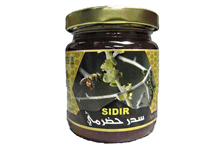Honey – The Five Best in The World

The Persians used honey to sweeten all their food until it brought back from the Polynesian islands. Today we list the five best in the world so that you know what to look for if you have the opportunity and it would be criminal to use these in cooking. Drizzle over yoghurt or whipped cream and prepare to swoon. Use in your tea, swirl into milk and bake with it – results will be astounding – replace sugar with honey as often as possible and believe in the health properties! Use, as an antibiotic, to cure colds and flu and to relieve nappy rashes – this is the thing as long as you use the more common types – these are sublime!!
BEECH HONEYDEW HONEY

Two aphids living in the New Zealand red and black beech trees produce something called honeydew. The Black Beech (Nothofagus solandri) and Red Beech (N. fusca) are inhabited by two insects the Ultracoelostoma assimile and U. brittini. The former inhabits the trunks and larger branches, while the latter prefers the upper. The bees that feed on this honeydew produce a very special honey which is called Beech Honeydew honey – it has a dark colour, a really deep malt flavour and is a little richer in minerals than the rest with more complex sugars. (In other words, the sugars don’t crystallize so easily!)
HEATHER HONEY
I was an odd child and spent a lot of time in my parents’ library reading all the books I wasn’t supposed to read. In my mother’s volumes of legends and myths I found tales of heather and Scottish glens and Scandinavian hillsides and hero’s and honey. Incredibly honey seemed to be prized even in the myths! Thick Ling Heather honey with it’s intense aroma and taste for the brave, Cross-leaved heather with it’s thin light honey for maidens and then the Bell heather with it’s intense taste which is never too sweet for the hero’s. Even though thick and waxy heather honey melts in the mouth and never sticks, moving slowly to invade the senses.
HYMETTUS HONEY

Greece brings us this ancient honey from Mount Hymettus, south east of Athens. For 3,000 years this area has produced honey of such high caliber that even Cicero (a known cynic) insisted that Plato must have been raised on the slopes! What makes it so interesting is that it is a monofloral honey which means that the bees, usually, have access to only one type of flower and here, it is a special variety of wild thyme from which the Cecropian bees harvest nectar. A gloriously runny honey, tinged with dark flecks and an aroma of wild thyme, it shouldn’t really be wasted in a cooking because there is nothing in the world to beat thick Greek yoghurt drizzled generously with this age old, undeniably Greek delicacy.
SIDR HONEY


This is the MOST expensive honey in the world and is only harvested twice a year in the Hadramaut Mountains of Yemen and Saudi Arabia. They say it has medicinal properties and it has been around for 7,000 years, produced by the bees who feed on the sidr tree. It is a holy tree in the Muslim faith and Christian’s call it Christ’s thorn. The honey is harvested during a strict forty day period and is not the easiest harvest on earth. I have never tasted it but it is said that is very sweet. If anyone would like me to do a tasting, though – just say the word.
MANUKA HONEY
Named for the little scrubby bush that produces tiny leaves and flowers, sometimes rose and sometimes white, called a manuka bush (the New Zealand tea tree). It has a rich, thick and generous flavour, is dark gold in colour with a hint of eucalyptus – utterly, utterly delicious!